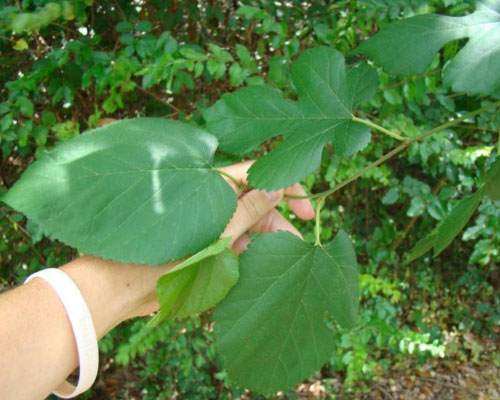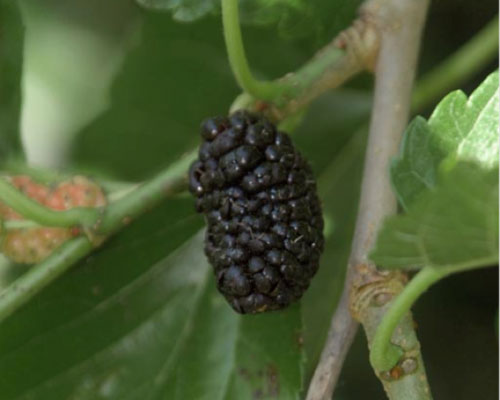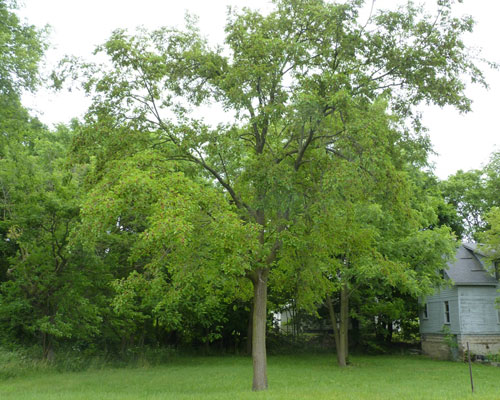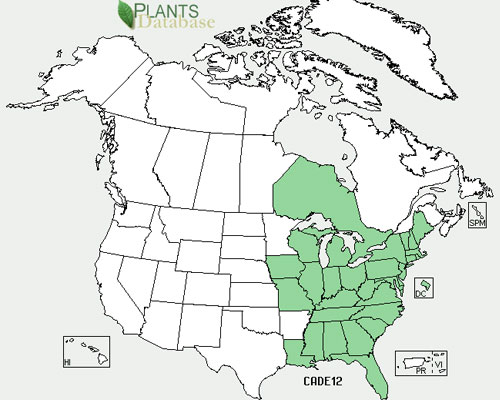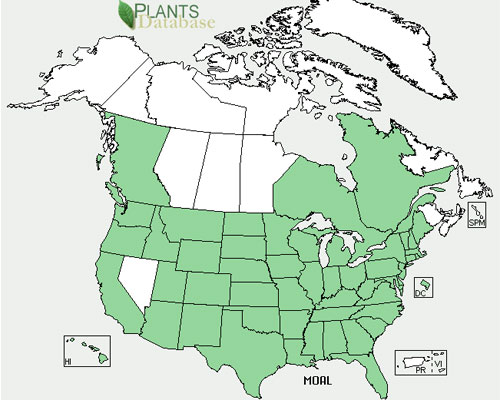White Mulberry
White Mulberry
Morus alba
White mulberry is native to China and was introduced to North America in the 1600s. White mulberry leaves provide the natural food for silkworms. Consequently, white mulberry has been widely planted throughout the world to develop the silk industry. In 1624 the legislature of Virginia required every male resident to plant at least 4 white mulberry trees to promote a North American silk industry. By the 1830s, the potential for a silk industry prompted a horticultural phenomenon known as "mulberry mania" in the eastern United States. In the late 1830s, white mulberry plantations in the Northeast were killed by cold winters and those in the South were killed by disease, halting the planting of white mulberry. However, white mulberry seeds were imported from Europe in the 1860s to promote a silk industry in Utah.
White mulberry is widely distributed across North America, occurring across all of the United States with the exceptions of Nevada and Alaska. In Canada, it is found in British Columbia, Ontario, and Quebec.
White mulberry grows as a dense, round-topped, perennial shrub or tree, reaching heights around 50 feet (15 m). The thin bark is shallowly furrowed and has long, narrow ridges. White mulberry leaves are alternate, simple, ovate, 2 to 4 inches (6-10 cm) long and 1 to 2 inches (3-6 cm) wide, with margins varying from coarsely serrate to deeply lobed and serrate. Leaves exude a milky juice when broken. Staminate and pistillate flowers develop in separate catkins. Plants are typically dioecious and occasionally monoecious. White mulberry fruits are cylindrical drupes, 0.5 to 1.0 inches (1.5-2.5 cm) long. Fruits may be black, purple, or white. The ovoid nutlet has a thin, soft shell, and the seed has a "hard bony coat".
White mulberry trees may have a long life span; at Mt. Vernon, a white mulberry planted by George Washington in 1785 was alive as of 1990. There are records of 150-year-old white mulberry trees in Greece and a 120-year-old planted white mulberry tree in Utah. White mulberry generally flowers from April to May, with earlier flowering in March in the Carolinas, and later flowering into June in the upper Midwest. White mulberry fruits begin forming in May and may continue developing into late July.
Both the foliage and fruit of white mulberry are edible to livestock and wildlife. White mulberry foliage contains high levels of protein, carbohydrates, fats, fibers, vitamins and minerals, though a high tannin content may limit its digestibility. White mulberry fruits are eaten by birds, red foxes, northern raccoons, opossums, squirrels, and other mammals. White mulberry provides general cover, as well as foraging and nesting habitat, for many bird species. White mulberry is widely planted as an ornamental shade tree or is used in shelterbelts. The milky sap of white mulberry is toxic to humans and irritates the skin.
AUTHORSHIP AND CITATION: Stone, Katharine R. 2009. Morus alba. In: Fire Effects Information System, [Online]. U.S. Department of Agriculture, Forest Service, Rocky Mountain Research Station, Fire Sciences Laboratory (Producer). Available: https://www.fs.fed.us/database/feis/plants/tree/moralb/all.html [2013, December 13].

